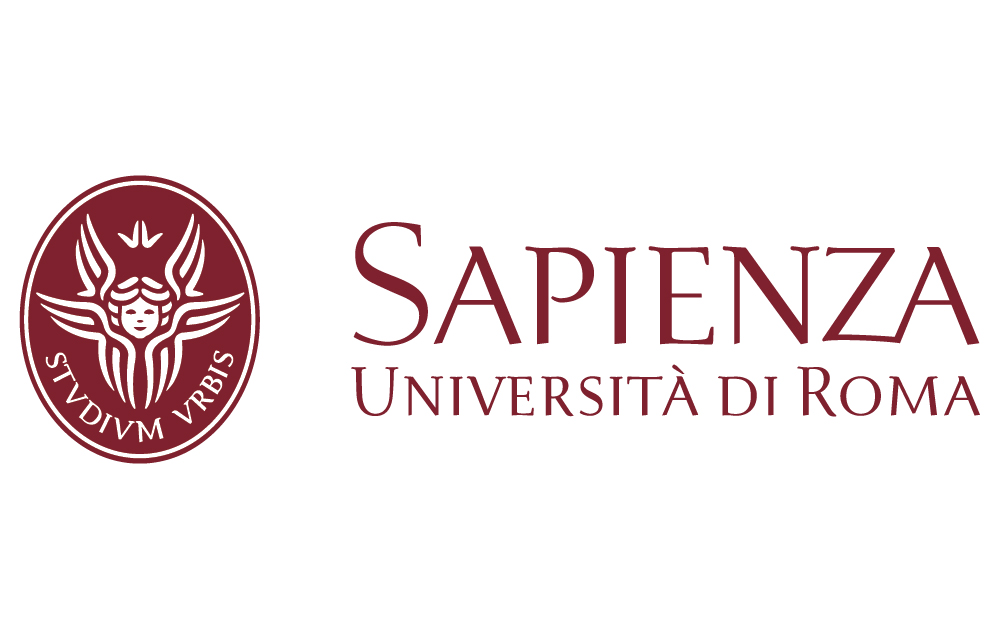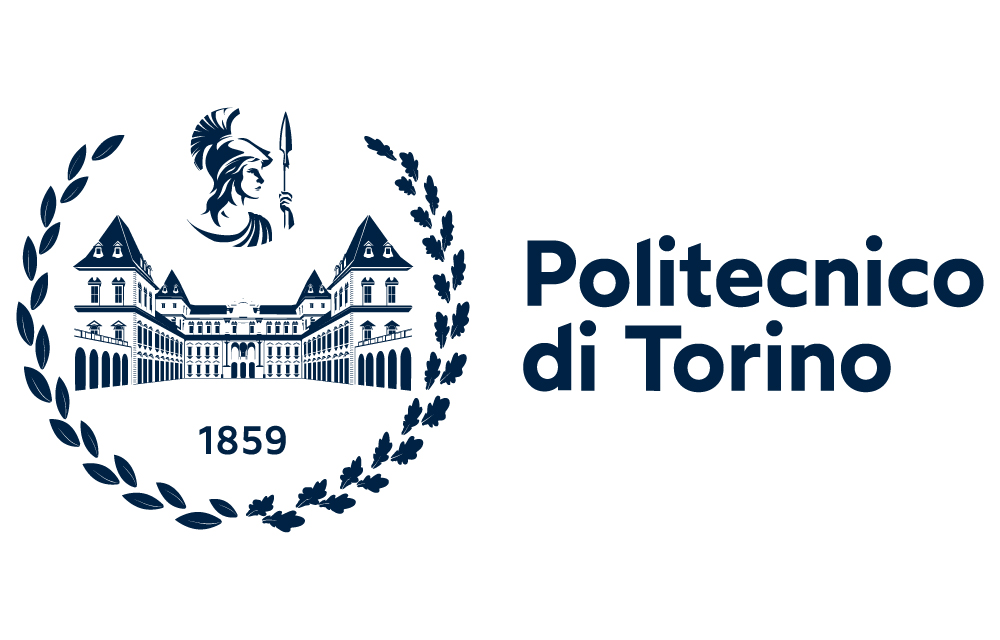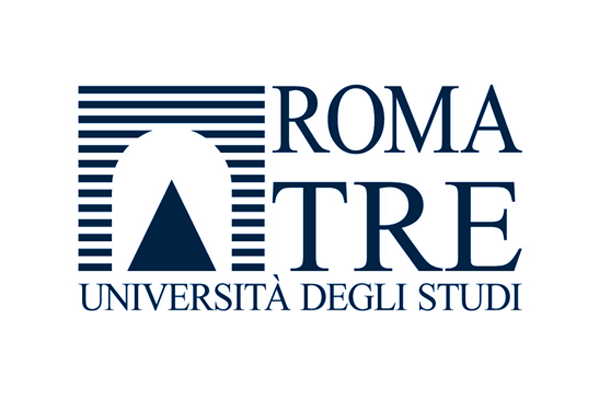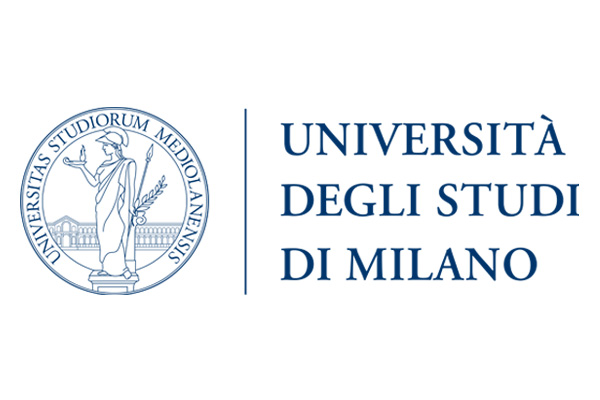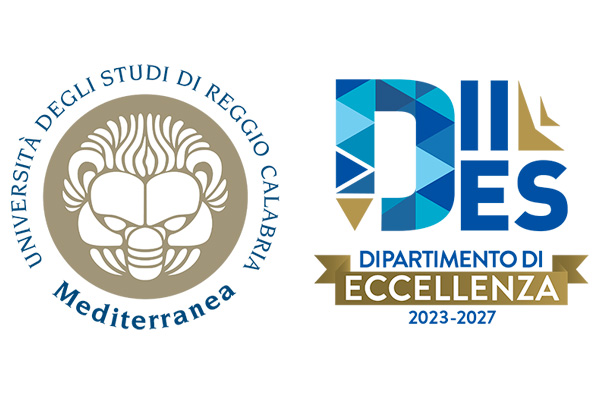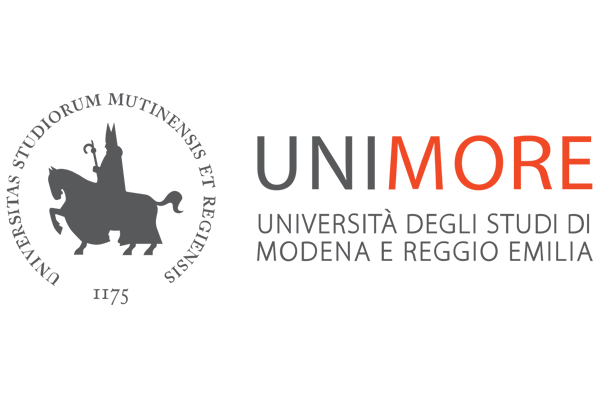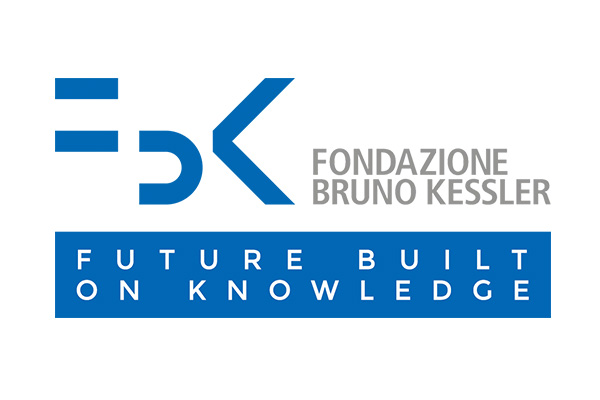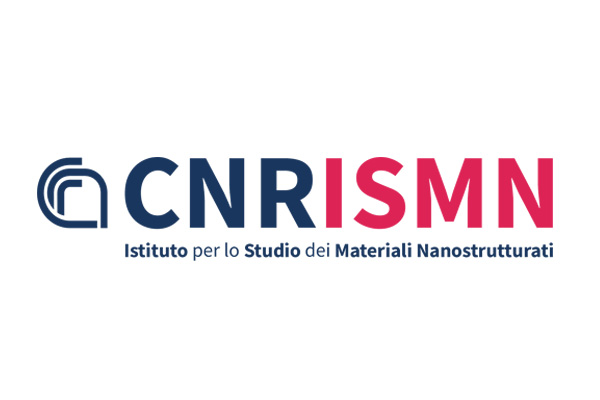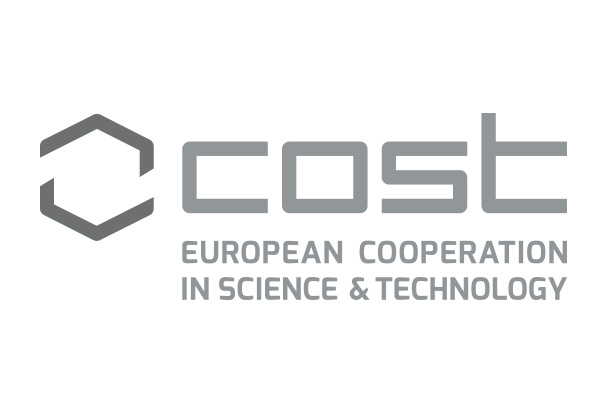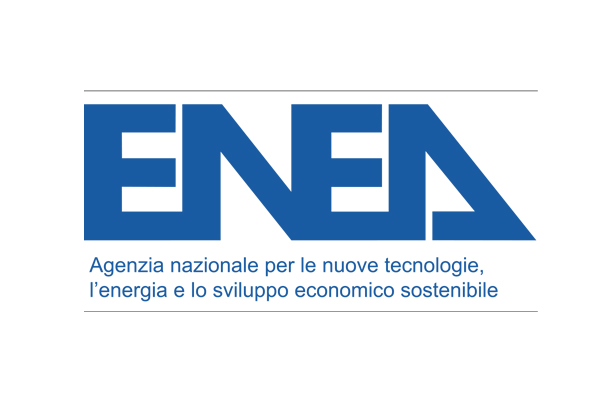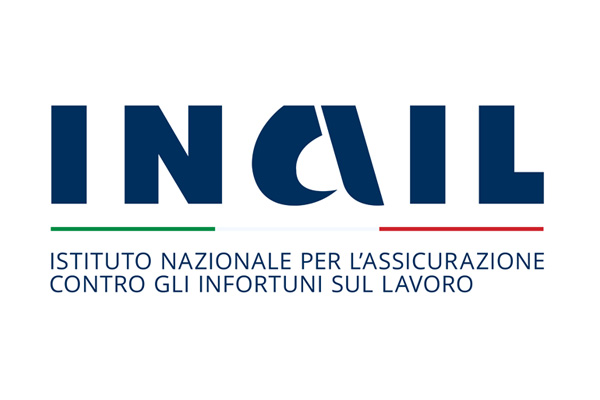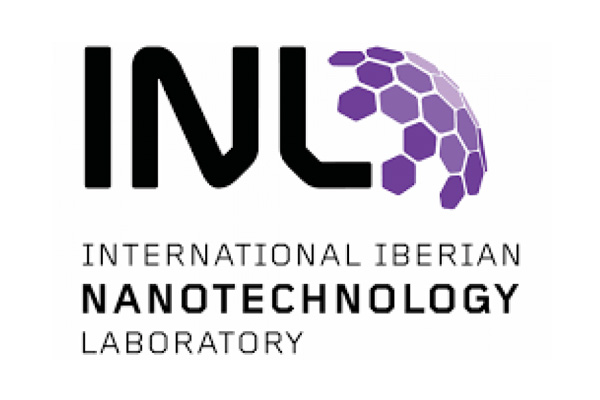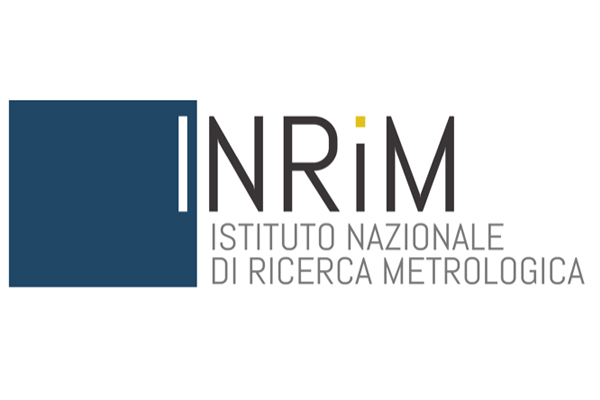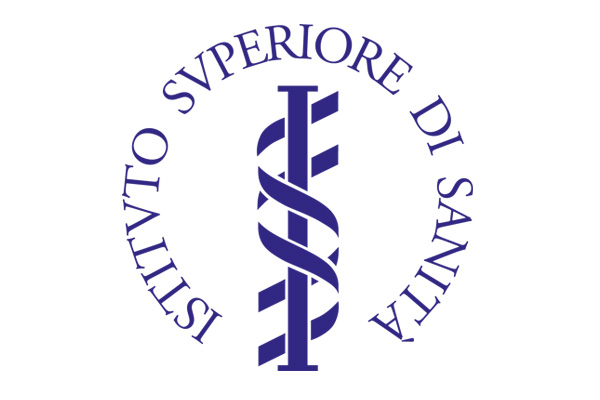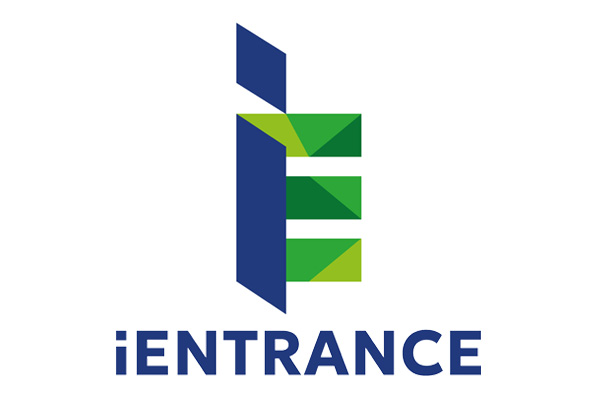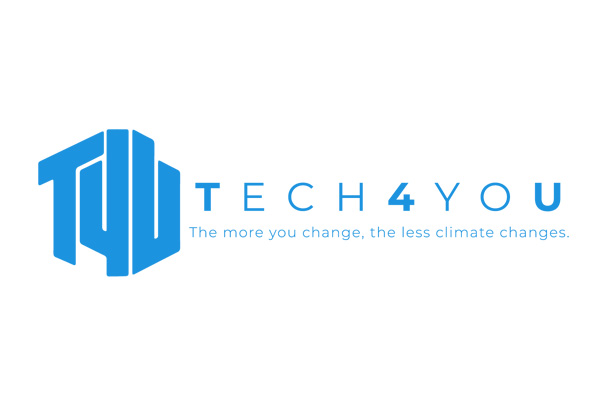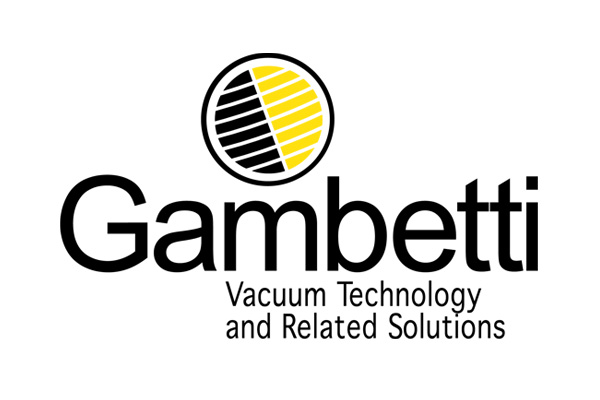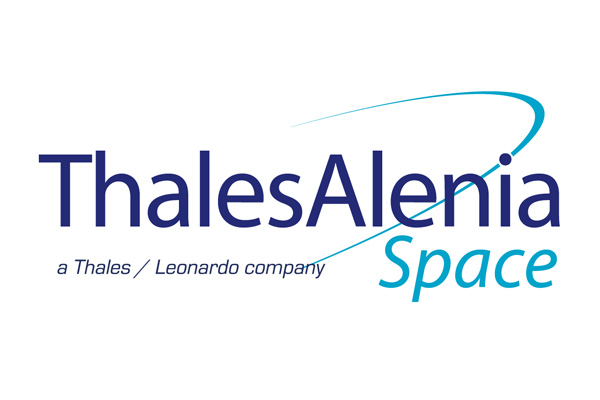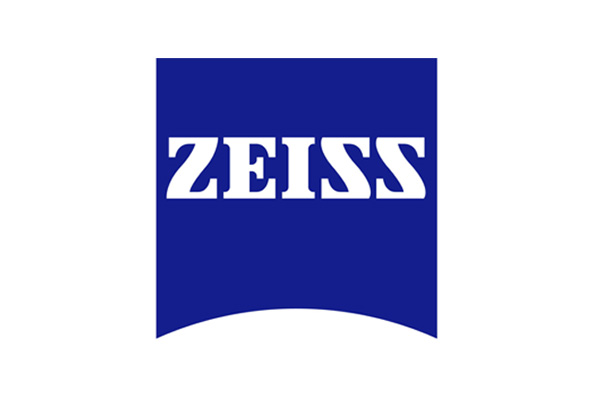|
WS.VII TECHNOLOGIES for ENERGY TRANSITION 17-18-19 September |
|||
| Co-organized with: | |||
 |
|||
|
WORKSHOP COMMITTEE: Margherita MORENO, ENEA |
|||
| The health of our planet is getting worse, both locally and globally, and one of the main reasons is the impact of human activities. A key issue is the increasing amount of greenhouse gases released into the atmosphere, especially carbon dioxide, which is causing the planet to warm up. Much of this is linked to how we produce and use energy. As the global population grows and standards of living rise, the demand for energy increases too—leading to higher emissions. To tackle this, we’ll need to gradually move away from fossil fuels and shift toward cleaner energy sources. This transition isn’t just a technical challenge—it’s also social and economic. We need technologies that not only protect the environment, but also support people’s well-being and are affordable and easy to adopt. Some of these new technologies are inspired by nature itself, like nuclear fusion (the process that powers the stars) or photosynthesis (the way plants turn sunlight into energy). Scientists are working hard to recreate these processes in the lab to produce clean energy. Of course, building these solutions isn’t simple. Unlike the basic technology of fire and combustion, which humans have used for thousands of years, modern energy technologies often require cutting-edge science. At the same time, they need to be low-cost and user-friendly if they’re going to be widely accepted and used. One major hurdle is the cost of energy. New technologies often take a long time to go from the lab to the real world, and this gap—known as the “valley of death”—can be hard to bridge. Another big challenge is how to deal with the ups and downs of renewable energy. Solar and wind power don’t always produce energy when we need it—there are daily and seasonal changes, and weather conditions can vary. So we need to install more capacity than we use and find ways to store the extra energy, whether for a few minutes or several months. That’s why public investment in research is so important. New energy technologies may not offer quick profits, but they’re essential for the future. And even improving the technologies we already have requires smart innovation and new materials. ENEA’s seminars focus on this exciting area of research and development. They explore topics like batteries and electrochemical storage, thermochemical energy storage, advanced computer modeling to design new materials, energy grids, and hydrogen storage technologies—for example, using chemical reactions to temporarily store energy and release it later. |
|||
| 17 September | ||||||||
| 09:00 - 10:30 Hybrid Energy Storage using thermal energy 1/2 WS.VII.1 - TT.I.J |
||||||||
| Chair: Raffaele LIBERATORE, ENEA | ||||||||
|
With a growing share of discontinuous renewables on the electricity grid, such as wind and solar, needed to meet international decarbonization targets, it is becoming increasingly difficult to balance supply and demand, ensure grid stability and avoid distortions in electricity markets, so there is a need for increased research and development of energy storage and system flexibility. The activity is funded by the Program Agreements between ENEA and the Italian Ministry of the Environment and Energy Security (MASE), Project 1.2 “Technologies for electrochemical and thermal storage” (PTR 2025-2027, CUP I53C24003300001). |
||||||||
| WS.VII.1.1 TT.I.J.1 |
Raffaele LIBERATORE - CV Enea Introduction on Hybrid Energy Storages using TES |
 |
||||||
| WS.VII.1.2 TT.I.J.2 |
Ambra GIOVANNELLI - CV, Università Roma 3 Giuseppe MESSINA - CV, ENEA Low temperature thermal/electric storage for utility scale applications |
 |
 |
|||||
| WS.VII.1.3 TT.I.J.3 |
Daniele NICOLINI - CV ENEA Medium temperature thermal/electric storage using concrete material prototypes |
 |
||||||
| WS.VII.1.4 TT.I.J.4 |
Franco DOMINICI - CV ENEA Study and development of eco-sustainable cementitious matrix hybrid materials with dissipative (conductive/resistive) properties |
 |
||||||
| 11:30 - 13:00 Hybrid Energy Storage using thermal energy 2/2 WS.VII.2 - TT.II.K |
||||||||
| Chair: Raffaele LIBERATORE, ENEA | ||||||||
|
With a growing share of discontinuous renewables on the electricity grid, such as wind and solar, needed to meet international decarbonization targets, it is becoming increasingly difficult to balance supply and demand, ensure grid stability and avoid distortions in electricity markets, so there is a need for increased research and development of energy storage and system flexibility. The activity is funded by the Program Agreements between ENEA and the Italian Ministry of the Environment and Energy Security (MASE), Project 1.2 “Technologies for electrochemical and thermal storage” (PTR 2025-2027, CUP I53C24003300001). |
||||||||
| WS.VII.2.1 TT.II.K.1 |
Roberto PETRUCCI - CV University of Perugia Life Cycle Analysis of a Combined Sensible and Latent Heat Thermal Energy Storage System |
 |
||||||
| WS.VII.2.2 TT.II.K.2 |
Elisabetta Maria VECA - CV ENEA Heat capacity and thermal conductivity of PCM-enhanced concrete |
 |
||||||
| WS.VII.2.3 TT.II.K.3 |
Francesco ROVENSE - CV ENEA Development of performance model with machine learning approach for medium temperature latent/sensible heat storage |
 |
||||||
| WS.VII.2.4 TT.II.K.4 |
Negin ROSHAN - CV Sapienza University of Rome Preparation of an interactive database with prediction of physical properties of sensible/latent medium-temperature heat storage materials |
 |
||||||
| WS.VII.2.5 TT.II.K.5 |
Enrico PATRUCCO - CV RSE Modeling and parametric analysis of a building-seasonal thermochemical storage system with Zeolite 13X |
 |
||||||
| 14:00 - 15:30 Smart Grids and Multisector Energy Systems: Strategic Levers for a Sustainable and Resilient Future WS.VII.3 - TT.III.J |
||||||||
| Chair: Martina CALIANO, ENEA | ||||||||
| Smart grids powered by renewable energy sources represent one of the key enablers of the transition towards a more sustainable, resilient, and economically efficient energy system. These intelligent networks, characterized by high flexibility, monitoring capabilities, and automation, enable the optimal integration of multiple renewable sources. They mitigate the inherent variability of renewables through the support of storage systems and advanced digital technologies for demand and supply management. Within this evolution, multisector energy systems are emerging as a powerful paradigm. These architectures interconnect and integrate different energy carriers — such as electricity, heat, hydrogen, methane, syngas, biofuels, and e-fuels — with the aim of maximizing overall system efficiency, reducing emissions, and enhancing energy security and reliability. These multi-commodity energy ecosystems are built on interconnected smart networks capable of dynamically adapting to local needs and operational conditions. To fully unlock the potential of these systems, advanced optimization is essential — both at the operational level (real-time management of distributed energy resources, predictive control, demand response) and at the design level (optimal network configuration, strategic siting of facilities, sizing of storage systems). These approaches must be driven by both economic goals — such as reducing operational costs and capital investments — and environmental targets, aligned with national and international decarbonization and sustainability commitments. In this context, the PNRR Rome Technopole - Spoke 2 and NEST - SPOKE 7 projects represent key initiatives. The former focuses on technology transfer and practical demonstration of smart grid capabilities, aiming to accelerate the adoption of innovative solutions and foster collaboration between research and industry. The latter targets the development of resilient energy systems through diversification of primary energy sources and the creation of integrated energy environments. Both projects contribute to shaping a new energy paradigm, where network intelligence, infrastructure flexibility, and cross-sector integration form the foundation of a sustainable, decentralized, and digitalized energy future. |
||||||||
| WS.VII.3.1 TT.III.J.1 |
Martina CALIANO ENEA Introduzione |
 |
||||||
| WS.VII.3.2 TT.III.J.2 |
Valerio MARIANI ENEA Digital Twin Technologies: The Rome Tec and NEST Case Studies |
 |
||||||
| WS.VII.3.3 TT.III.J.3 |
Marialaura DI SOMMA University of Napoli "Federico II" Local energy communities: from concepts and enabling conditions to optimization and real-life applications |
 |
||||||
| WS.VII.3.4 TT.III.J.4 |
Mosè ROSSI & Gabriele COMODI Polytechnic University of Marche Multi-vector energy systems and hydrogen technologies for enhancing efficiency and decarbonizing multiple sectors |
 |
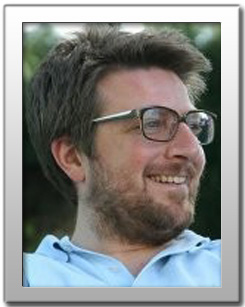 |
|||||
| WS.VII.3.5 TT.III.J.5 |
Luigi MARTIRANO Sapienza University of Rome Vehicle to building strategies for the flexibility of electricity demand |
 |
||||||
| 16:00 - 17:30 Photoelectrocatalysis and Photocatalysis for Hydrogen: Challenges and Solutions for Hybrid Perovskites, Charge‐Transport Materials, and Catalysts WS.VII.4 - TT.IV.J |
||||||||
| Chair: Vera LA FERRARA & Silvano DEL GOBBO, ENEA | ||||||||
| In today’s energy transition contest, where reducing carbon emissions is crucial, green hydrogen offers a promising means to store and valorize solar energy. Photoelectrocatalysis (PEC) and photocatalysis (PC) technologies enable the direct conversion of photons into hydrogen via semiconductors, bypassing the intermediate electricity generation step and paving the way for modular, stand-alone systems ideally suited to remote sites or integration with small-scale photovoltaic plants. Despite their potential, these approaches can be significant improved. First, efficiency remains low: many semiconductors fail to harvest the full solar spectrum and suffer losses from rapid electron–hole recombination, penalizing solar-to-hydrogen yields. At the same time, material stability is challenged by photochemical corrosion and surface passivation, which quickly degrade performance in the absence of suitable protective coatings. Finally, industrial-scale synthesis is often costly and complex, as many advanced materials require elaborate fabrication processes. To address these critical issues, the session will focused into several emerging research. One particularly promising frontier is hybrid metal-organic perovskites, which combine exceptional charge mobility with tunable band gaps and energetic alignments with catalytic materials; to fully harness their potential, however, robust encapsulation and interface-engineering strategies are essential to ensure operational stability and durability. A second focus will be on charge-transport materials—crucial for rapid carrier extraction and recombination suppression. Finally, advanced catalysts designed to enhance reaction kinetics will be explored. Throughout the session, these challenges will be critically assessed and potential solutions discussed, with the aim of defining shared guidelines to make PEC and PC competitive technologies for solar-driven hydrogen production. |
||||||||
| WS.VII.4.1 TT.IV.J.1 |
Fehad KHAN - CV Politechnic of Turin Recent advances on Solar to H2 production: state of the art on PV-EC reactors, novel catalytic strategies and ionic liquids integration |
 |
||||||
| WS.VII.4.2 TT.IV.J.2 |
Vera LA FERRARA - CV ENEA Perovskite Photoelectrodes as Standalone Photovoltaics and in Monolithic Photoelectrochemical Water-Splitting Architecture |
 |
||||||
| WS.VII.4.3 TT.IV.J.3 |
Silvano DEL GOBBO - CV ENEA Materials for photocatalytic water splitting: State of the art and future perspectives |
 |
||||||
| WS.VII.4.4 TT.IV.J.4 |
Noemi FIASCHINI ENEA Off-topic: From Structure to Space Environment: C-PEEK thermoplastic material and AO protective coating in VLEO |
 |
||||||
| 18 September | ||||||||
| 09:00 - 10:30 Young scientists for electrochemical storage 1/2 WS.VII.5 - WS.X.1 - TT.V.J |
||||||||
| Chair: Margherita MORENO, ENEA | ||||||||
|
Batteries play a crucial role in enabling a low-carbon future. Equally important is ensuring that young researchers—who embody that future—are empowered to help shape its direction. The key to progress lies in the exchange of ideas and the cultivation of synergy. The activity is funded by the Program Agreements between ENEA and the Italian Ministry of the Environment and Energy Security (MASE), Project 1.2 “Technologies for electrochemical and thermal storage” (PTR 2025-2027, CUP I53C24003300001). |
||||||||
| WS.VII.5.1 WS.X.1.1 TT.V.J.1 |
Margherita MORENO ENEA Introduction: current development on battery research, focus on triannual national programme (PTR 25-27) |
 |
||||||
| WS.VII.5.2 WS.X.1.2 TT.V.J.2 |
Silvia BODOARDO Polytechnic University of Turin Battery 2030+ vision for the future |
 |
||||||
| WS.VII.5.3 WS.X.1.3 TT.V.J.3 |
Daniele CALLEGARI University of Pavia Young Scientist Battery Manifesto Topic 1: New Technologies |
 |
||||||
| WS.VII.5.4 WS.X.1.4 TT.V.J.4 |
Erico CORDES Fraunhofer IGCV Young Scientist Battery Manifesto Topic 2 |
 |
||||||
| WS.VII.5.5 WS.X.1.5 TT.V.J.5 |
Utkarsh VIJAY University of Picardie Young Scientist Battery Manifesto Topic 3 |
 |
||||||
| WS.VII.5.6 WS.X.1.6 TT.V.J.6 |
in definition |  |
||||||
| 11:30 - 13:00 Young scientists for electrochemical storage 2/2 WS.VII.6 - WS.X.3 - TT.VI.J |
||||||||
| Chair: Margherita MORENO, ENEA | ||||||||
| Batteries play a crucial role in enabling a low-carbon future. Equally important is ensuring that young researchers—who embody that future—are empowered to help shape its direction. The key to progress lies in the exchange of ideas and the cultivation of synergy. At the European level, the Battery 2030+ initiative is leading this effort by organizing the Young Scientist Event (YSE) on June 3, 2025. This event brings together top European universities and research institutions, culminating in the creation of a “Manifesto for the Batteries of the Future.” This document captures the insights and challenges identified during the YSE and serves as a foundation for future collaboration. Across this and the previous session, the outcomes of the YSE will be presented as a follow-up and a stepping stone for continued dialogue. The aim is to define the necessary initiatives and activities that will drive groundbreaking innovations and discoveries in battery technology. Young researchers from Italian and other European universities and research centers will showcase their work, offering forward-looking perspectives, proposing new research directions, and encouraging collaboration among European scientists and industrial partners. The activity is funded by the Program Agreements between ENEA and the Italian Ministry of the Environment and Energy Security (MASE), Project 1.2 “Technologies for electrochemical and thermal storage” (PTR 2025-2027, CUP I53C24003300001). |
||||||||
| WS.VII.6.1 WS.X.3.1 TT.VI.J.1 |
Rocco CANCELLIERE ENEA Expanding recycling strategies for greener battery technologies |
 |
||||||
| WS.VII.6.2 WS.X.3.2 TT.VI.J.2 |
Andrea GENTILE University of Montpellier Evaluating Multi-salt Electrolytes and Textured Supports for «Zero-Excess» Lithium Metal Batteries |
 |
||||||
| WS.VII.6.3 WS.X.3.3 TT.VI.J.3 |
Marco CATILLO ENEA Exploring cathode materials for batteries through machine learning |
 |
||||||
| WS.VII.6.4 WS.X.3.4 TT.VI.J.4 |
Marco AMBROSETTI RSE New self-supported anode materials for Sodium-ion batteries |
 |
||||||
| WS.VII.6.5 WS.X.3.5 TT.VI.J.5 |
Benedetta BRANCATO CNR-ITAE Sodium halide battery: an innovative system for stationary energy storage |
 |
||||||
| WS.VII.6.6 WS.X.3.6 TT.VI.J.6 |
Roberto NICOLETTI ENEA Tunable Carbon Dots for energy storage applications |
 |
||||||
| 14:00 - 15:30 Empowering the future: young researchers and hybrid energu storage in funded research WS.VII.7 - TT.VII.J |
||||||||
| Chair: Margherita MORENO, ENEA | ||||||||
|
The workshop is expected to be an interactive session aimed at showcasing the work of early-career researchers engaged in the development and implementation of hybrid energy storage systems within the framework of nationally and internationally funded projects. The activity is funded by the EERA Joint Programme Energy Storage and the Program Agreements between ENEA and the Italian Ministry of the Environment and Energy Security (MASE), Project 1.2 “Technologies for electrochemical and thermal storage” (PTR 2025-2027, CUP I53C24003300001). |
||||||||
| WS.VII.7.1 TT.VII.J.1 |
Margherita MORENO ENEA Introduction |
 |
||||||
| WS.VII.7.2 TT.VII.J.2 |
Salvatore VASTA - CV CNR ITAE Supporting Grids and Buildings Through Hybrid Energy Storage |
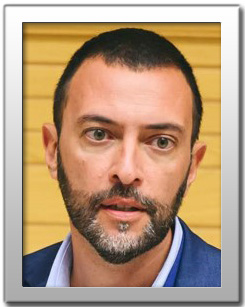 |
||||||
| WS.VII.7.3 TT.VII.J.3 |
Sara GARCÍA BALLESTEROS - CV Polytechnic University of Turin Solid–electrolyte interphase behavior in lithium-mediated ammonia electrosynthesis for energy application |
 |
||||||
| WS.VII.7.4 TT.VII.J.4 |
Ilaria MAROTTA - CV CNR ITAE Hybrid Services from Advanced Thermal Energy Storage Systems: the HYSTORE project |
 |
||||||
| WS.VII.7.5 TT.VII.J.5 |
Giovanna PALLOTTA - CV University of Sannio Advancing efficient heating and cooling energy supply in Southern Europe: the potentialities of aquifer thermal energy storage |
 |
||||||
| WS.VII.7.6 TT.VII.J.6 |
Giosuè GIACOPPO - CV CNR-ITAE Design and Development of a Hybrid 5 kW / 10 kWh Energy Storage System Combining Vanadium Redox Flow and Lithium-ion Technologies |
 |
||||||
| 16:00 - 17:30 Data Platforms for Energy Materials WS.VII.8 - TT.VIII.J |
||||||||
| Chair: Francesco BUONOCORE & Massimo CELINO, ENEA | ||||||||
| The workshop will explore how advanced data platforms are accelerating discovery and application in the field of Materials for Energy. Speakers will present established and emerging frameworks – including IEMAP and Energy-GNoME – illustrating how AI and data integration are reshaping materials RD. The session will demonstrate how integrating diverse data sources and machine learning workflows enables breakthroughs in material design, energy storage, and efficiency optimization. Critical challenges will be addressed, offering a balanced view of both technical barriers and strategic opportunities in a data-intensive landscape. By shedding light on the unique contributions of each platform, a comprehensive understanding of how to leverage integrated data solutions to push the boundaries of energy materials science will be illustrated. |
||||||||
| WS.VII.8.1 TT.VIII.J.1 |
Francesco BUONOCORE - CV ENEA Applications of Materials Science Data: From Cathode Design to Hybrid Interfaces |
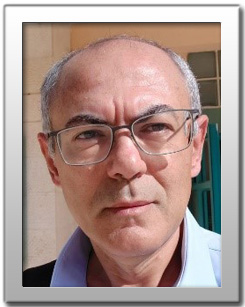 |
||||||
| WS.VII.8.2 TT.VIII.J.2 |
Paolo DE ANGELIS - CV Polytechnic of Turin The accelerating integration of artificial intelligence (AI) into materials science promises to shorten the discovery cycle for energy-relevant compounds |
 |
||||||
| WS.VII.8.3 TT.VIII.J.3 |
Simone TERNES - CV University of Tor Vergata Toward a unified description of solution processing of thin films: How precise control and full specification of process parameters can bridge the gap between manual and automated device fabrication |
 |
||||||
| WS.VII.8.4 TT.VIII.J.4 |
Axel TOSELLO GARDINI - CV IIT Emergent complexity in catalysis: How dynamics drive heterogeneous catalysts |
 |
||||||
| 19 September | ||||||||
| 09:00 - 10:30 Modelling, materials and processes for CO2 capture, storage and valorization 1/2 WS.VII.9 - TT.IX.J |
||||||||
| Chair: Maria Luisa GRILLI & Pasqual LAVERDURA, ENEA | ||||||||
| According to European Green Deal, adopted also in the Italian PNIEC as an objective, the energy system will have to be completely decarbonized by 2050. Decarbonizing the energy and industrial sector requires, among other actions, also the development of robust CO2 capture and storage technologies, the exploitation of depleted gas deposits and saline aquifers, together with the deployement of infrastructures for CO2 transportation. Carbon capture and storage (CCS) is a mature and highly effective solution for reducing CO2 emissions from energy-intensive point sources, mainly hard-to abate, while, direct air capture technology, aiming to capture CO2 directly from the atmosphere and the combinations of bio-energy and CCS applications, BECCS, despite still lagging behind are gaining a growing attention. The need for decarbonization of the energy systems comes also from the recent growing electricity demand required from data centers and artificial intelligence, which is pushing towards the exploitation of renewable energy sources. This session will explore the recent frontiers of carbon capture, storage and utilization, ranging from modeling to sustainable materials and technologies. |
||||||||
| WS.VII.9.1 TT.IX.J.1 |
Maria Luisa GRILLI - CV & Umberto Pasqual LAVERDURA - CV ENEA Introduction |
 |
 |
|||||
| WS.VII.9.2 TT.IX.J.2 |
Andrea DI CARLO - CV University of L'Aquila Simulation of sorption enhanced biomass gasification for green hydrogen production |
 |
||||||
| WS.VII.9.3 TT.IX.J.3 |
Michela ALFÈ - CV CNR-STEMS Tunable frameworks for CO₂ control: designing materials for CCUS |
 |
||||||
| WS.VII.9.4 TT.IX.J.4 |
Marco GIACINTI BASCHETTI - CV University of Bologna Polymer-CO2 interaction in the CCS value Chain from membrane capture to transport applications |
 |
||||||
| WS.VII.9.5 TT.IX.J.5 |
Barbara MALSEGNA - CV University of L'Aquila Hydrotalcite-Based Sorbents for green hydrogen production with simultaneous capture and separation of CO2 by Sorption-Enhanced Water-Gas Shift |
 |
||||||
| 11:30 - 13:00 Modelling, materials and processes for CO2 capture, storage and valorization 2/2 WS.VII.10 - TT.X.J |
||||||||
| Chair: Maria Luisa GRILLI & Pasqual LAVERDURA, ENEA | ||||||||
| According to European Green Deal, adopted also in the Italian PNIEC as an objective, the energy system will have to be completely decarbonized by 2050. Decarbonizing the energy and industrial sector requires, among other actions, also the development of robust CO2 capture and storage technologies, the exploitation of depleted gas deposits and saline aquifers, together with the deployement of infrastructures for CO2 transportation. Carbon capture and storage (CCS) is a mature and highly effective solution for reducing CO2 emissions from energy-intensive point sources, mainly hard-to abate, while, direct air capture technology, aiming to capture CO2 directly from the atmosphere and the combinations of bio-energy and CCS applications, BECCS, despite still lagging behind are gaining a growing attention. The need for decarbonization of the energy systems comes also from the recent growing electricity demand required from data centers and artificial intelligence, which is pushing towards the exploitation of renewable energy sources. This session will explore the recent frontiers of carbon capture, storage and utilization, ranging from modeling to sustainable materials and technologies. |
||||||||
| WS.VII.10.1 TT.X.J.1 |
Maria Luisa GRILLI - CV & Umberto Pasqual LAVERDURA - CV ENEA Introduction |
 |
 |
|||||
| WS.VII.10.2 TT.X.J.2 |
Serena TODARO - CV CNR-ITAE e-DME from CO2 : Driving the Future with Carbon-NeutralFuels |
 |
||||||
| WS.VII.10.3 TT.X.J.3 |
Leonardo DURANTI - CV University of Tor Vergata DRM-active Ru-based Structured Catalyst for Biogas-fed Intermediate Temperature-SOFCs |
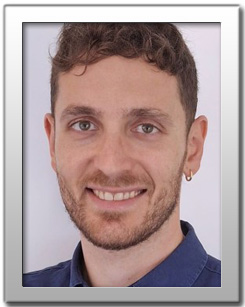 |
||||||
| WS.VII.10.4 TT.X.J.4 |
Alessio VAROTTO - CV University of Sapienza | ENEA Sustainable catalysts for DRM reaction based on leachate solutions of spent autocatalysts |
 |
||||||
| WS.VII.10.5 TT.X.J.5 |
Francesca FAMÀ - CV ENEA Blue hydrogen production via Steam Methane Reforming with CO2 capture and Sorption-Enhanced SMR: a techno-economic analysis |
 |
||||||
| 14:00 - 15:30 Frontier materials for energy applications WS.VII.11 - TT.XI.J |
||||||||
| Chair: Daniele MIRABILE GATTIA, ENEA | ||||||||
|
The development of innovative materials represents a fundamental challenge for the development of new technologies. The activity is funded by the Program Agreements between ENEA and the Italian Ministry of the Environment and Energy Security (MASE), Project 1.4 “Frontier materials and devices for energy applications” (PTR 2025-2027, CUP I53C24003320001). |
||||||||
| WS.VII.11.1 TT.XI.J.1 |
Daniele MIRABILE GATTIA ENEA Alloy Design and metal 3D printing for technological applications |
 |
||||||
| WS.VII.11.2 TT.XI.J.2 |
Marco FORTUNATO ENEA Improved composites for heat exchange |
 |
||||||
| WS.VII.11.3 TT.XI.J.3 |
Francesca MAZZANTI ENEA Advanced ceramics for 3D printing of high-performance components |
 |
||||||
| WS.VII.11.4 TT.XI.J.4 |
Francesca VARSANO ENEA Supported magnetic NiCo nanoparticles as dual-function catalyst for reforming reactions and heating agent by r.f. induction |
 |
||||||
| WS.VII.11.5 TT.XI.J.5 |
Federica DE RICCARDIS ENEA Electrospun PVDF/conjugated polymers blends as Pt-free electrocatalysts |
 |
||||||
| WS.VII.11.6 TT.XI.J.6 |
Giuliano SICO & Riccardo MISCIOSCIA ENEA Advanced processing and testing conditions for low-cost gravure-printed pyroelectric devices |
 |
 |
|||||
| Back to Overview | Go to Plan 17 September | ||
| Go to Plan 18 September | |||
| Go to Plan 19 September | |||

